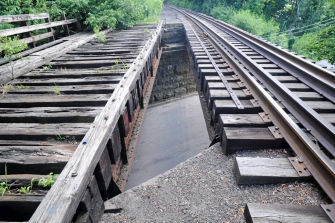On February 3rd of this year, a 38-car Norfolk Southern freight train carrying hazardous materials derailed in East Palestine, Ohio. Several railcars burned for more than two days, with emergency crews then conducting a controlled burn of several railcars. The fumes caused the release of hydrogen chloride and phosgene into the air, forcing the evacuation of thousands of residents who live in the area.
Since the derailment accident just two months ago, more than 43,000 marine animals have been killed, according to the Ohio Department of Natural Resources. Residents in the area have reported hundreds of pets and other wildlife becoming sick and dying. The toll on human life from the accident is still unknown, with many residents reporting continuing health issues since the accident.
Derailment Statistics
According to national statistics, there were more than 1,100 train derailments last year, about three per day, in the U.S., with human error being the leading cause. Although many of these accidents appear to be minor, there are more and more incidents occurring – like the one in Ohio – that put anyone living in the area of the crash at risk of developing serious medical issues.
If you or a loved one has suffered catastrophic injuries or died in a serious train accident, seek the advice of a Virginia railroad injury attorney. Once a full investigation determines the cause of the accident, you may have legal recourse.
Derailment Causes
Investigators report devastating scenes from derailment accidents and it is the task of first responders to undertake a search and recovery mission. Obviously, searching for survivors and recovering bodies takes priority over investigations. However, once completed, retrieving the train’s ‘black boxes’/recorder and obtaining train records and manifests are the first steps as the wreckage is documented.
The black box which can record the train’s speed, brake history, and forward-facing cameras, can all aid investigators determine the cause of a derailment. Possible reasons behind a derailment can include:
- Driver impairment, error, or distraction
- Mechanical condition of the train such as defective/malfunctioning brakes
- Problems with the track, such as a partial track replacement (or ‘plug’) that is internally defective
- Excessive speed
- Signal errors
- Weather impacting tracks, like heavy rains causing a washout of part of the track
- Uneven load/cargo
- Ineffective safety regulations/redundant systems that can’t compensate for human error
Injuries and Fatalities
Typical injuries in a train wreck include anything from cuts and bruises to more serious neck and spine injuries from being thrown about inside the cabin. Other common injuries suffered in train wrecks are head injuries, crushed limbs, pelvic injuries, and musculoskeletal injuries.
Many of these injuries can cause long-term damage which requires lengthy and costly rehabilitation.
Compassionate Legal Representation
The law imposes certain legal obligations on common carriers such as railroads in order to protect passengers and the public in general. When there is a failure to use reasonable care on the part of the railroad where the accident occurred, such as conductor or engineer negligence, a train defect, engine mechanical failure, or railroad track defects, choosing legal counsel experienced in Virginia railroad accident litigation is critical.
To learn more, contact Shapiro, Washburn & Sharp to schedule a free and confidential consultation.
RELATED CONTENT
